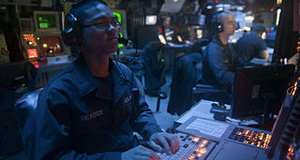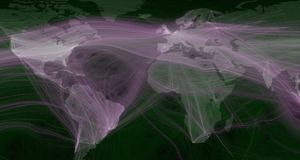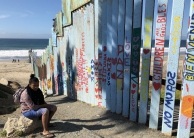Defining Armed Conflict in International Humanitarian Law
By
2011, Vol. 3 No. 04 | pg. 1/1
IN THIS ARTICLE
KEYWORDS
International Humanitarian Law, based on the concepts of jus ad bello, is defined to be the law of war. This means that the laws involved are meant to be active in a situation of an armed conflict or during war. However, just like international law, international humanitarian law requires the political will of states for a situation to be considered as an armed conflict, so that the law can be in force. The scenario has therefore arisen that states have been adamant to recognize a situation as an armed conflict for certain political reasons. The aim of this paper is to show that the abstract view of international humanitarian law impacts the definition of an armed conflict. This is because of the entry of new actors in conflicts such as private military companies and the changing dynamics of conflict, such as battles against terrorism. What Exactly is an Armed Conflict?There are three types of conflicts that are recognized by international humanitarian law: international armed conflict, internationalized armed conflict, and non-international armed conflict.International humanitarian law does make it clear what an international armed conflict is. According to the Geneva Conventions of 1949, common article 2 states that “all cases of declared war or of any armed conflict that may arise between two or more high contracting parties, even if the state of war is not recognized, the convention shall also apply to all cases of partial or total occupation of the territory of a high contracting party even if the said occupation meets with no armed resistance'' (Geneva Convention, 1949, common art.2). This means that the occurrence of international armed conflict is clear, that is, it would be a conflict between the legal armed forces of two different states. A good example would be the North Korean- South Korean war of 1950. The second armed conflict recognized by international humanitarian law is a new phenomenon known as 'an internationalized armed conflict'. The situation of an internationalized armed conflict can occur when a war occurs between two different factions fighting internally but supported by two different states (Stewart, 2003, p 315). The most visible example of an internationalized armed conflict was the conflict in the Democratic Republic of Congo in 1998 when the forces from Rwanda, Angola, Zimbabwe and Uganda intervened to support various groups in the DRC (Stewart, 315). Non-international armed conflicts, according to common article 3 of the Geneva Convention, are ‘armed conflicts that are non-international in nature occurring in one of the High contracting parties’ (Geneva Convention, common article 3, 1949). This means that one of the parties involved is nongovernmental in nature. However, common article 3 also states that it does not apply to other forms of violence such as riots, isolated and sporadic acts of violence. This abstract definition has made it difficult to make a clear distinction between a mere disturbance and an armed conflict, therefore relying heavily on the political will of states to classify the situation as an armed conflict. For a situation to be classified as a non-international armed conflict, it has to achieve two variables: first, the hostilities have to reach a certain minimum level of intensity (Vite, p 75; ICRC, 2008, p 3) and form in a collective character; and second, there has to be a level of organization of the parties (Vite, p 75) Challenges Facing the Classification of Armed ConflictsThe classification of a situation as an armed conflict means that international humanitarian law comes into force immediately. However, due to certain legal and political reasons various situations are too complex to be considered as armed conflicts. Abstract Definition of Non-International Armed ConflictThe definition of non-international armed conflict according to the Geneva convention common article 3 is basically that, the situation has to be within the territory of a high contracting party/state and assumes that an armed conflict exists when the situation reaches a certain level that distinguishes it from other forms of violence such as riots, sporadic and isolated forms of violence (situations of internal disturbances) (Geneva convention common art 3, Vite, 2009). In modern law, for the situation to be recognized as an armed conflict, two variables are used; intensity of the violence and the level of organization of the parties. If one of these is not fulfilled then it is considered to be just a mere disturbance (Vite, p 76). Internal disturbances according to Vite (p 77) are situations in which ‘there is no non-international armed conflict as such, but there exists a confrontation within the country, which is characterized by a certain seriousness or duration and which involves acts of violence. Prior to the formulation of the Geneva Conventions, traditional international law recognized three stages for a situation to be classified as an internal armed conflict: rebellion; insurgency; belligerency (Cullen, 2010, p 8). The concept of rebellion in international law refers to the situation of short-lived insurrections against the authority of a state, according to Cullen, “a rebellion occurs if the faction seeking to seize the power of the state seems susceptible to a rapid suppression by normal internal security” (Cullen, p 9). Therefore a rebellion according to traditional international law is a political upheaval within a state which the state's internal security, specifically the police, can handle, for example, the political upheavals in Kenya in 1992 with citizens demanding for the promotion of democracy. The concept of insurgency according to traditional international law is ambiguous and vague in defining what exactly an insurgency is. One of the main reasons as to why international law and even international humanitarian law is ambiguous in its definition is due to the fact that to recognize an insurgency would be construed as ‘an indication that the recognizing state regards the insurgents as legal contestants, and not as mere lawbreakers (Cullen, p 11).’ Therefore insurgents and rebel groups would be recognized as lawful combatants. The recognition of an insurgency in international law may also bring about the internationalization of an event; this is because third party states can recognize the situation as an insurgency according to their own interests without owing allegiance. Cullen explains further by stating “The indeterminate scope of insurgency allows for the concept’s manipulation by states wishing to define their relationship with insurgents. Third states may recognize the existence of insurgency without explicitly declaring an allegiance or adopting a position of neutrality towards the conflict... the recognition of insurgency serves as a partial internationalization of the conflict, without bringing the state of belligerency into being. This permits third states to participate in an internal war without finding themselves ‘at war’, which would be the consequence of intervention on either side once the internal war” (Cullen, p 11-12). Changing Dynamics of ConflictModern conflicts have drastically changed over the last few years with the introduction of new actors in conflict zones such as private military companies, multinational corporations, and transnational armed groups such as Al Qaeda and drug cartels. The main challenge has been that international humanitarian law has not yet evolved to comprehensively adapt to these new dynamics. War on TerrorAfter the September 11 attacks, United States declared a war on terror on transnational organizations more specifically Al Qaeda (Sassoli, 2006, p 5). In political terms, the war on terror is correct but there have been controversies as to whether international law recognizes it as an armed conflict. As stated earlier, international humanitarian law comes into force when a situation is classified as an armed conflict, but the modern dynamics of differentiating terrorism and an armed conflict is vague. Secondly, the status of the individual is complex as it is hard to differentiate a terrorist from a freedom fighter. There is no clear definition of what terrorism is exactly, the definitions that are in existent are based on a state’s interest. For example, the American definition of terrorism is; ‘premeditated, politically motivated violence perpetrated against noncombatant targets by sub national groups or clandestine agents while a terrorist group is defined as any group, or which has significant subgroups which practice international terrorism (international terrorism being terrorism involving citizens or the territory of more than one country’ (U.S. Code Title 22, Ch.38, Para. 2656f (d)). The most controversial definition is the UN definition that states that terrorism is attempting to bring about political and/or social change by deliberately attacking civilians. This definition has made it difficult especially in trying to differentiate resistance movements that oppose forms of occupation and a terrorist organization that both often use violence to obtain a political change. For example, during the colonial period in Kenya, the Mau Mau fighters attacked Europeans in their farms and stole their goods (Davies, 1953, p 224), if the same situation was to be replayed in the 21st century then many scholars would consider the Mau Mau as a terrorist organization. However, in international law, ‘acts of terrorism are clearly defined’, according to the Geneva Convention (1937), an act of terrorism is defined as “criminal acts directed against a State or intended to create a state of terror in the minds of particular persons, or a group of persons, or the general public” (Article 1, para. 1) “any willful act calculated to endanger the lives of members of the public” (Article 2, para. 3), “willful destruction of or damage to public property” (Article 2, para. 2), and “manufacture, obtaining, possession or supplying of arms or ammunition, explosives or harmful substances with a view to the commission in any country whatsoever” (Article 2, para. 5). Terrorism in international law is also seen as a form of aggression, aggression is defined as “the use of armed force by a State against the sovereignty, territorial integrity or political independence of another State”, (United Nations General Assembly Resolution 3314), more specifically in article 3(g) it states that aggression can be “the sending by or on behalf of a State of armed bands, groups, irregulars or mercenaries, which carry out acts of armed force against another State of such gravity as to amount to the acts listed above, or its substantial involvement therein.” The UN resolution (Resolution 3314) does give justification for an armed attack to be pursued against the state; however, the issue is that modern international terrorism does not involve the direct participation of state (Sassoli, p 4). As reiterated earlier, international humanitarian law recognizes only three forms of armed conflict, an international armed conflict where it involves the belligerents being two legal armed forces of two different states (Geneva Convention, common article 2). International terrorism seems to have a different dynamics as a government is fighting against a transnational group that does not have any links with a state (Sassoli, p 4), according to the ICRC commentary, humanitarian law does not recognize an international armed conflict between states and non state actors as this would accord armed groups the same privileges enjoyed by members of regular armed forces (p 7). International humanitarian law’s main challenge has been the legal status of an individual as to whether he is a terrorist or a combatant especially in non-international armed conflicts (ICRC, 2007, p 6) and in situations of self-determination (Chadwick, 1996). According to the ICRC, states engaged in non-international armed conflicts have, with increasing frequency, labeled any act committed by domestic insurgents an act of “terrorism” even though, under IHL, such an act might not have been unlawful (e.g. attacks against military personnel or installations). For example, the Hamdan case shows how the status of a combatant is confusing in the ‘war on terror’. Salim Ahmed Hamdan, a Yemeni citizen was arrested on charges on “attacking civilians; attacking civilian objects; murder by an unprivileged belligerent; destruction of property by an unprivileged belligerent’’ (court for the District of Columbia,) and was tried in a military commission. During the case, Hamdan pleaded habeas corpus and that he could not be tried by a military commission until his status as a prisoner of war was determined by a competent tribunal as required by Geneva Convention 3 (Duxbury, 2007 p 2). The US government replied that the Geneva conventions did not apply to him as the conflict was not in accordance with the classifications of armed conflict (Duxbury, p 2). The Supreme Court stated that an international armed conflict was a conflict between states, whereas the aim of Common Article 3 was to provide minimum protections in situations involving rebels in conflicts not of an international nature but the Court took a broad approach to Common Article 3 and came to the conclusion that it operated in Hamdan’s circumstances (Duxbury, p 3). The two different views on the ‘war on terror’ show how it is difficulty in determining the dynamics of the situation. Importance of Classifying Armed ConflictsThe classification of a situation to be an armed conflict means that international humanitarian law comes into force immediately; this means that it provides a framework for the behavior of belligerent parties and the protection of non-combatants and the respect of the environment and the property of civilians. The failure to classify a state of affairs as an ‘armed conflict’ has grave legal and humanitarian consequences (Duxbury, p 10). This is because, International humanitarian law has a close relationship with human rights law that aims to protect the rights and dignity of civilians during peace and armed conflict with parties of the conflict having legally binding obligations concerning the rights of persons not involved in the conflict (United Nations, 2010). The main principles of international humanitarian law includes: principle of distinction where a combatant should distinguish a non combatant (including a soldier) who has surrendered from a soldier and the distinguishing of military targets from civilian territories, the limited use of certain weapons such as biological weapons, and the protection of the environment (Dinstein, 2004, p 55). Therefore, if it is not in force, belligerent parties will have an extent of freedom in carrying out there activities without checks. However, there are still situations that are recognized as armed conflicts but there are still breaches of international humanitarian law. In such situations, the role of the Security Council comes in to play in its role of promoting international peace and security according to the UN Charter (Chapter 7, 1945). In the recent times, the Security Council has been more proactive in promoting human rights especially in situations of armed conflicts by imposing economic and political sanctions and more specifically in the establishment of tribunals as is the case of Yugoslavia, Sierra Leone (Fleck, 2008, p 275). ConclusionThe politics behind classification of armed conflicts as often brought about the failure of international humanitarian law in playing its part. Because of states’ interests, conflicts continue to happen with breaches of human rights and destruction of property continuing to happen. For international humanitarian law to play a crucial part, it needs to adapt and continuously evolve to cater for the changing dynamics of conflicts experienced today. ReferencesChadwick (1996) Self determination, terrorism and international humanitarian law, 1st ed. Hague: Martinus Nijhoff Publishers Cullen, A. (2010), The Concept of Non-international Armed conflict in international humanitarian law, Cambridge studies in international law and comparative law, 66: 1-10 Duxbury, A. (2007), Drawing Lines in the Sand- Characterizing conflicts for the purposes of teaching International humanitarian law, Melbourne Journal of International law, volume 8: 1-14 Galicki, Z. (2005), International law and terrorism, American Behavioral Scientist, 48(6):743-757 Geneva Conventions (1949), Convention for the Amelioration for the Wounded and Sick in Armed forces in the field Sassoli, M. (2006), Transnational armed groups and international humanitarian law, Harvard University, 6:1-50 Stewart, G.S. (2003), Towards a single definition of armed conflict in international humanitarian law: A critique of internationalized armed conflict, 85(850):313-350 Vite, S. (2009), Typology of armed conflicts in international humanitarian law: legal concepts and actual situations, International Review of the Red Cross, 91(873): 69-95 ICRC (2008), How is the term armed conflict defined in international humanitarian law, Opinion Paper, Geneva ICRC (2007), International Humanitarian Law and the challenges of contemporary armed conflicts, Geneva, (30IC/07/8.4) League of Nations (1938), Convention for the Prevention and Punishment of terrorism (C.546(1).M383(1)) United Nations (1974), Definition of Aggression General Assembly Resolution 3314, New York: United Nations United Nations (2010), Report of the Office of the High Commissioner on the outcome of the expert consultation on the issue of protecting the human rights of civilians in armed conflict, New York: United Nations (A/HRC/14/40) United States District court for the District of Columbia Civil Action No. 04-1519 (JR) Suggested Reading from Inquiries Journal
Inquiries Journal provides undergraduate and graduate students around the world a platform for the wide dissemination of academic work over a range of core disciplines. Representing the work of students from hundreds of institutions around the globe, Inquiries Journal's large database of academic articles is completely free. Learn more | Blog | Submit Latest in Law & Justice |


















